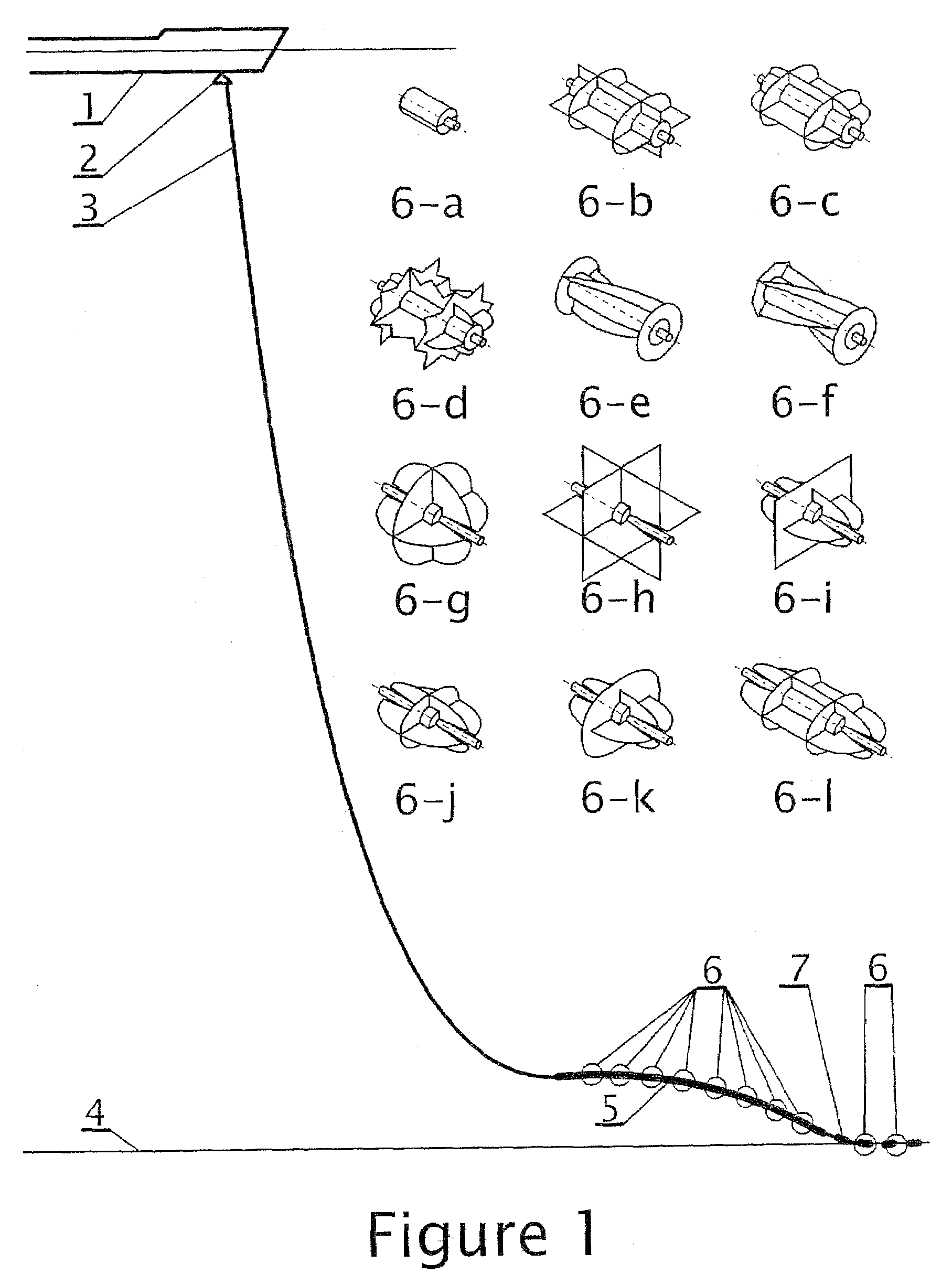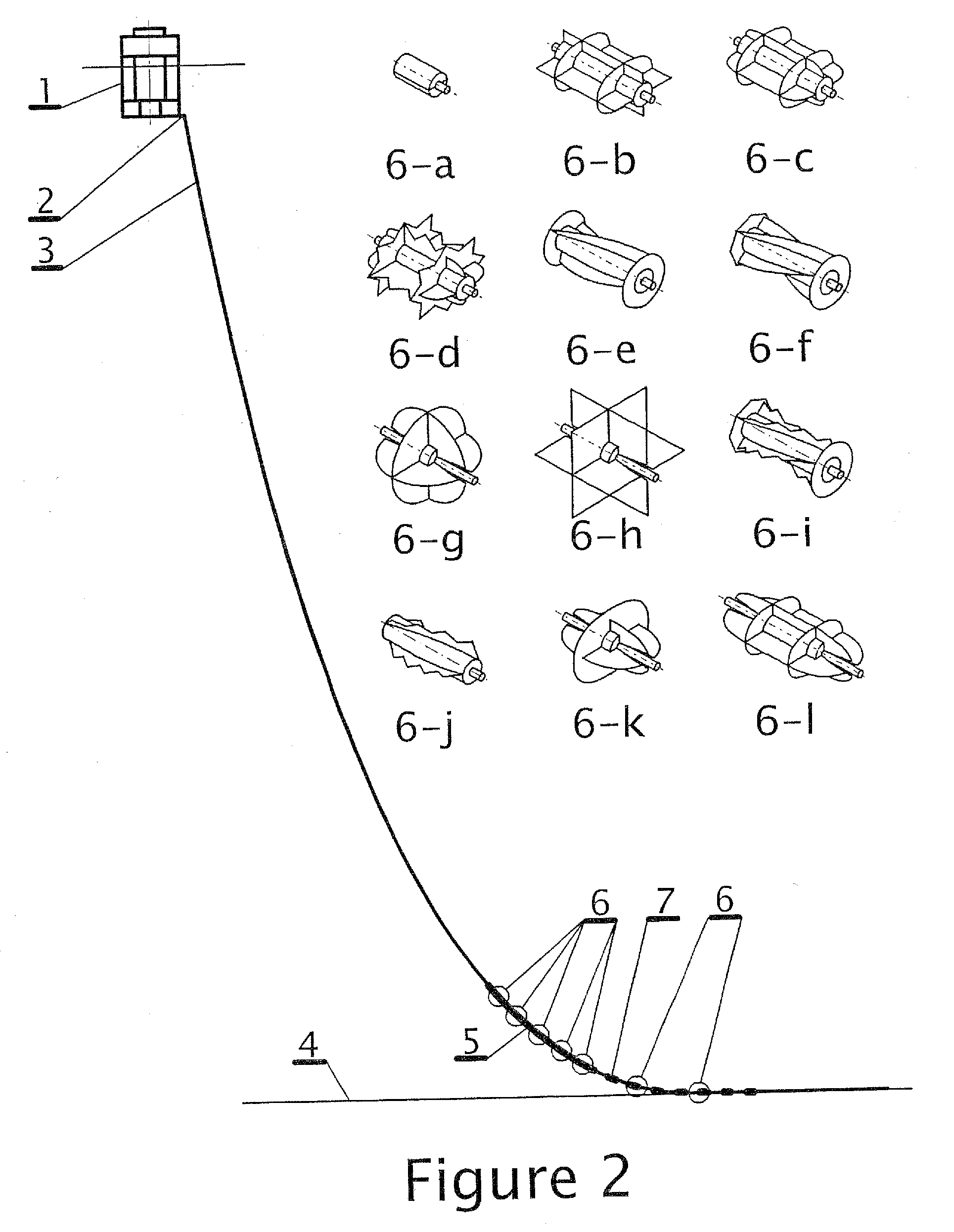Dynamic motion suppression of riser, umbilical and jumper lines
a technology of dynamic suppression and riser, applied in the direction of drilling rods, drilling casings, drilling pipes, etc., can solve the problems of reducing the effective mass of the line, affecting the stability of the line, and the dynamic effect of the line used in offshore engineering can be very complex, so as to improve the effective mass, improve the effect of drag damping, and improve the effect of mass
- Summary
- Abstract
- Description
- Claims
- Application Information
AI Technical Summary
Benefits of technology
Problems solved by technology
Method used
Image
Examples
Embodiment Construction
[0069]This invention allows the designer to locally fine tune several physical properties of lines, so that the desired motion suppression effect is achieved. The key line physical properties involved are the following:[0070]Mass per unit length,[0071]Added mass per unit length (described in terms of the added mass coefficient),[0072]Submerged weight and buoyancy per unit length,[0073]Drag coefficient.
The above combined properties of the line, on which known or / and novel devices are mounted combined with the properties of the said devices are of importance herein.
[0074]The above properties affect the statics and dynamics of said lines in complex ways that have been outlined with regard to the prior art pertaining to the use of clump weights and buoyancy. This invention extends the tools available to the designer by allowing more control over the remaining said line physical properties, as well as more flexibility in shifting between the added and the actual mass per unit length as w...
PUM
 Login to View More
Login to View More Abstract
Description
Claims
Application Information
 Login to View More
Login to View More - R&D
- Intellectual Property
- Life Sciences
- Materials
- Tech Scout
- Unparalleled Data Quality
- Higher Quality Content
- 60% Fewer Hallucinations
Browse by: Latest US Patents, China's latest patents, Technical Efficacy Thesaurus, Application Domain, Technology Topic, Popular Technical Reports.
© 2025 PatSnap. All rights reserved.Legal|Privacy policy|Modern Slavery Act Transparency Statement|Sitemap|About US| Contact US: help@patsnap.com



